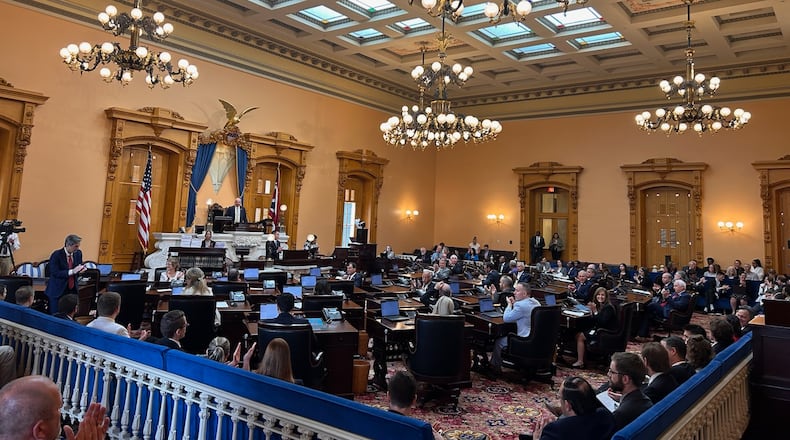Above the 450% level, students can receive a percentage of the full scholarship, prorated based on their family’s income. The minimum percentage a student can get is 10% of the scholarships.
The amount of money a student can receive in a voucher also rose by 12%, the same percent increase given to traditional public schools. High school students can now get up to $8,407, and kindergarten through eighth grade students can get up to $6,165.
Traditional public schools got an estimated $1.54 billion increase in funding, a 12% increase over 2023 funding.
Students will have one of three ways to verify their income: they can give a form that shows they qualify under another state or federal program; they can sign an affidavit affirming the students’ family income meets the income requirement; or the Department of Education can ask for other evidence they deem appropriate.
The median income in Ohio is $61,938, according to the U.S. Census Bureau, and the median household income in Montgomery County is $56,543.
The budget increases the estimated allocations for scholarships by $181.8 million next fiscal year, and by $190.70 million in the 2024-2025 school year. Ohio will be spending almost $2 billion in the next two years on school vouchers alone.
Because the income limit decreased, more students are expected to take advantage of the program, according to the Legislative Service Commission, a government agency that analyzes Ohio Legislature bills for fiscal effects.
Aaron Churchill, Ohio policy director at the Fordham Institute, says it’s not clear exactly how many more students will become involved with the program.
“I think you will see some families transferring into a private school or at least taking a harder look at their private school options because some of those financial constraints have been loosened,” Churchill said.
But if that is a handful of students or a few thousand is yet to be determined, he said.
Churchill also noted an increase in the amount of oversight that private schools get. The Ohio Department of Education was directed in this budget bill to measure private schools on their student growth, which looks at how students progress over time.
Currently, some test data is available for students who are using vouchers to attend private schools, but the measure would allow families to better compare public and private schools.
All In For Ohio Kids, a coalition made up of teachers’ unions Ohio Federation of Teachers and Ohio Education Association along with liberal think tank Policy Matters Ohio and community organizing group Ohio Organizing Collaborative, argued that the priority should be for the state to fund public schools not private ones.
“The legislature’s new universal private school voucher scheme will ensure that state support for our public schools will be diminished to pay for tuition for private school students, no matter how wealthy their family is or how their school performs,” the coalition said in a statement.
About the Author

